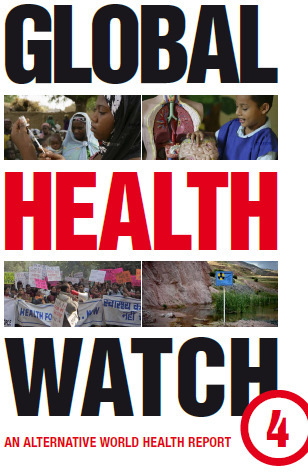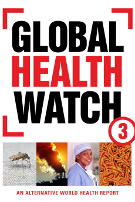Day Five at the 64th WHA
Highlights from the fifth day of the 64th World Health Assembly
Geneva, 20.05.11
Committee B - Infant and young child nutrition: implementation plan
The item was discussed in Committee B in the end of the morning. Statements were made by Sri Lanka, India, Bahrein, Bangladesh, Thailand, USA, Turkey, China, Nigeria, Jamaica, Canada, Iraq, Malaysia, Bolivia, Tanzania, Australia, Paraguay, Kuwait, Democratic Republic of Congo, Morocco, Chinese Taipei, Burundi and Indonesia. Countries from southeast Asia were aligned with the following points:
- WHO needs to reinforce the focus on breastfeeding (exclusive breastfeeding until 6 months and overall breastfeeding until at least 2 years of age), like the baby friendly hospital initiative and mother friendly environments;
- management of severe malnutrition should be done with culturally acceptable food instead of Ready to Use Food (RUTF)when possible, or locally produced RUTF;
- regulation of the market of baby food and respect to the International Code of Marketing of Breast Milk Substitutes are needed.
Many other countries also shared the importance to invest in breastfeeding promotion and support. Many countries brought their experiences in implementing the plan, reporting on implementation strategies and progress made. The need to have adapted implementation strategies according to each country's context as well as adequate monitoring systems was stressed by many. African countries reported on the high prevalence of micronutrients deficiencies. Paraguay called on the need to involve civil society in order to have a real intersectoral approach and acknowledged that the challenge is to see nutrition as a human right, which is not only food supplementation, but also allowing conditions for safe nutrition and life.
Followed the statements by civil society: International Lactation Consultant Association (ILCA) urged the WHO not to shift attention to general nutritional interventions in detriment of breastfeeding promotion and support. Focus on breastfeeding cannot be lost. Consumers International warned of the numerous code violations reported by IBFAN and stated that industry participation in the implementation of the plan is of great concern, since there is no mention of conflicts of interest. In this WHA, Dr. Chan said that we should pick the good industries and run with them but the report shows that there are no good ones. So if the role of industry expands to the policy setting, the effects of recommendations will be compromised at all levels. Then came the PHM statement (read by Camila Giugliani), which was very much aligned with the preceding two civil society organizations. The statement recalled also upon the need to intervene in the wider socioeconomic and political determinants of malnutrition, and that nutrition strategies must be part of a wider strong health system based on primary health care. The PHM statement was followed by International Association of Infant Food Manufacturers, and so the interventions ended with the industry's perception, stating that WHO needs to promote the involvement of the private sector, and that locally available foods do not meet the needs of children, so mothers need counseling and education which they can provide!
Finally, the secretariat (by means of Dr. Alwan, assistant Director-General) addressed some of the interventions. He said that he had taken note of the comments made by the delegate form Thailand regarding the need to accord greater priority to strengthening the implementation of the International Code of Marketing of Breast-milk Substitutes. To civil society, he assured that WHO will continue to apply the guidelines for interaction with the private sector during the consultations on the implementation plan and that the biannual reporting on the global strategy for infant and young child feeding and the Code will continue. He also said that a draft of the comprehensive implementation plan would be prepared by August 2011, circulated to members for comments in September 2011, and submitted to the EB in January 2012. Besides that, he mentioned that consultations would be held in Burkina Faso and Sri Lanka (and maybe in the Americas) before the EB. The Watchers need to keep on watching this issue!
Strategies for the safe management of drinking-water for human consumption
Technical Briefing: Towards a successful implementation of the WHO Global Code of Practice on the International Recruitment of Health Personnel; challenges and opportunities
The meeting discussed the implementation and monitoring of the WHO Global Code of Practice on the International Recruitment of Health Personnel ("the Code").
Chris Rakuom, Chief Nursing Officer in Kenya, highlighted the difficulties in his country related to the decrease in human resources for health (HRH) related to both rise in population and reduced workforce due to migration. The lack is particularly severe in specialistic care, for both doctors and nurses. A study conducted in 2000 showed that there are more doctors outside Kenya than in the country. Migration trends for nurses show that migration is highest in early years after graduation, however also very skilled and experienced personnel is involved. The most affected areas are intensive care and surgery. Actions undertaken are a review of bilateral arrangements including migration of staff, as well as a review of remuneration although the challenge now is to provide financial support for such reform. Moreover, Kenya has now a new constitutions and some laws are being reviewd and adapted to the changes; within this reform, a committee is revising health related laws including an effort to adapt them to the Code. Awareness and education about the code need to be brought to the population and the health personnel.
Bjorn-Ige Larse, from the Norwegian Directorate of Health, illustrated the actions undertaken by his country. The aging population and the increasing disproportion between the elderly and the youth is a great challenge for the national health system. There are increased needs for assistance and care and less staff, although action is being taken to encourage students to engage in the health sector. Norway has defined a plan in order to be self sufficient in terms of HRH until 2030 and believes that any recruitment of foreign staff should be discontinued. In order to do so, Norway encourages self-regulation of employers and - if not sufficient - will establish a law in order to enforce it. Implementation of the Code is not just a responsibility of heahealth sector as relevant policies need to be aligned from many other ministries (labour, finance, foreign affairs, education and research, trade and industry, justice etc.). In order to raise awareness, the Code has been translated and a dedicated national authority has been appointed. Consultations with stakeholder are being undertaken to finalise a national strategy for the implementation of the Code.
A third presentation from Thailand was delivered by Krisada Saweaengdee from the International Health Policy Programme, Ministery of Public Health (MOPH). She highlighted the participation of Thailand in the development of the Code in WHA63, followed by a translation in Thai and a bilingual publication. The national HRH committee acknowledged the Code and the MOPH was designed as the national authority. A national strategy to mainstream the implementation of the Code has been designed, involving the ministries of Public Health, Labour, Foreign Affairs, as well as the private sector, the academy and professionals' associations. A 3-year action plan is being implemented and has received proper budget allocation; it comprises a strategy for raising public awareness on the Code (including to medical and nursing students); assessment of HR information system; evidence-based policies towards recruiters; research and documentation of good practices on international recruitment. Recuiter registration systems should also been developed. Three conclusions: the WHO draft guidelines on the monitoring of the Code implementation are useful; Thailand is not a destination country but has private hospitals that host approximately 2 million international patient visits annualy, affecting internal migration of specialists from public to private hospitals; Thailand is not currently affected by a HR crisis but incresingly becomes a source country and this may deplete the pool of HRH.
Geneviève Genzianos, Coordinator of Public Services International (PSI), brought the voice of health and social care workers who are experiencing migration. PSI is a global federation of public sector trade unions, and runs projects in Ghana, South Africa and Kenya that started with literature review, mapping and participatory research. The Code is a very powerful instrument, and should be implemented through social dialogue aimed at tackling policy issues, particularly at the national level. PSI also provides pre-migration interventions, information and support to workers in order to raise awareness on the practical as well as on the ethical issues related to migration. More still needs to be done in reaching also employers and recruitment agencies.
Finally, Eric de Roodenbeke, Director General of the International Hospital Federation (IHF), presented the perspective of the private sector. IHF is an umbrella organisation representing health care providers in the world. The private sector involved in delivering of health care, both profit and non profit, is growing, particularly in emerging economies, and there is a strong trend towards decentralisation of the stewardship functions. Strong level of autonomy of providers makes it difficult to monitor what happens, therefore the call in the Code of a national authority (already established in 36 countries) is useful. The way these authorities will operate with the providers will be a key element, as dialogue and incentive will be much more effective than repressive regulations. All IHF members agree in principle with the Code and welcomed the public hearings that were put in place. But when it comes to implementation of the principles local situations make it difficult to comply with it, especially in OECD countries. Moreover, in remote areas the pressure from governments to providers is to deliver health care, as this is what they have to do especially if they have autonomy. The quick fix until now has been to enhance the pull factors and attract foreign workers, and this will need more than the code to be reversed. In market economies there is competition among providers, the global market of health workers makes it possible to compete in order to recruite the best staff. In LMIC the challenge for providers is to attract and retain workers, therefore IHF started an initaibive founded by the Global Health Workforce Alliance aimed at identifying the root causes of push and pull factors for health workers. In many countries there is still a limited capacity to enforce the Code's principles for a weak stewardship of the national authorities. The Code is a useful tool to raise awareness but it should be supported by national policies for HRH that provide sustainability. HRH could be better utilised for an imporvement of their productivity. Role and responsibilities of different health workers could be revisited in social dialogue contexts. Medial tourism, as well as remote medicine e.g. in imaging diagnostics, could be used more. Good will is important, the Code is good tool to support good will, but incentives are needed for allowing providers to reduce their pressure on pull factors.
There were many interventions from the floor from NGOs, professionals' and students' associations, representatives of Member States. Particularly from Wemos and Medicus Mundi International clarifications were asked on the efficacy of voluntary self-regulations. Moreover, concerns were expressed towards multistakeholder initiatives. However, the panel replied reinforcing the orientation towards a "good will approach". Further concerns were related to the WHO leadership in the Code implementation, referring to the implementation strategy document published by the Secretariat and its soft targets and indicators.
- See also Official Summary Report of the Day in Journal No 5 (from page 6)
| Attachment | Size |
|---|---|
| Item 13.13 Statement to the 64th session of the World Health Assembly of WHO.doc | 29 KB |
- Login to post comments




